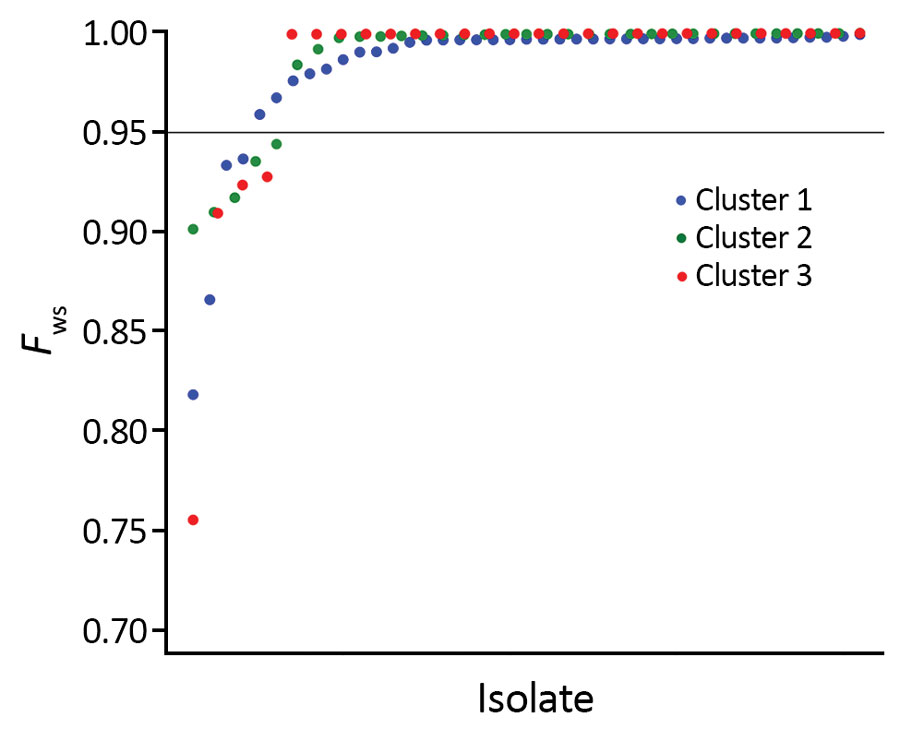Volume 26, Number 8—August 2020
Research
Population Genomic Structure and Recent Evolution of Plasmodium knowlesi, Peninsular Malaysia
Figure 3

Figure 3. Low levels of diversity within individual Plasmodium knowlesi clinical infections from Malaysia as indicated by the high values of the genomewide within-isolate fixation index FWS (potential range 0–1). A value of >0.95 is generally taken to indicate an infection dominated by a single genotype, whereas values <0.95 indicate infections that are clearly genotypically mixed. Each point shows the value for an individual infection sample; only 4 of the 28 cluster 3 clinical isolates from Peninsular Malaysia are clearly mixed (similar to the proportions observed in infections with the cluster 1 and 2 types in Malaysian Borneo).
Page created: May 18, 2020
Page updated: June 25, 2020
Page reviewed: June 25, 2020
The conclusions, findings, and opinions expressed by authors contributing to this journal do not necessarily reflect the official position of the U.S. Department of Health and Human Services, the Public Health Service, the Centers for Disease Control and Prevention, or the authors' affiliated institutions. Use of trade names is for identification only and does not imply endorsement by any of the groups named above.